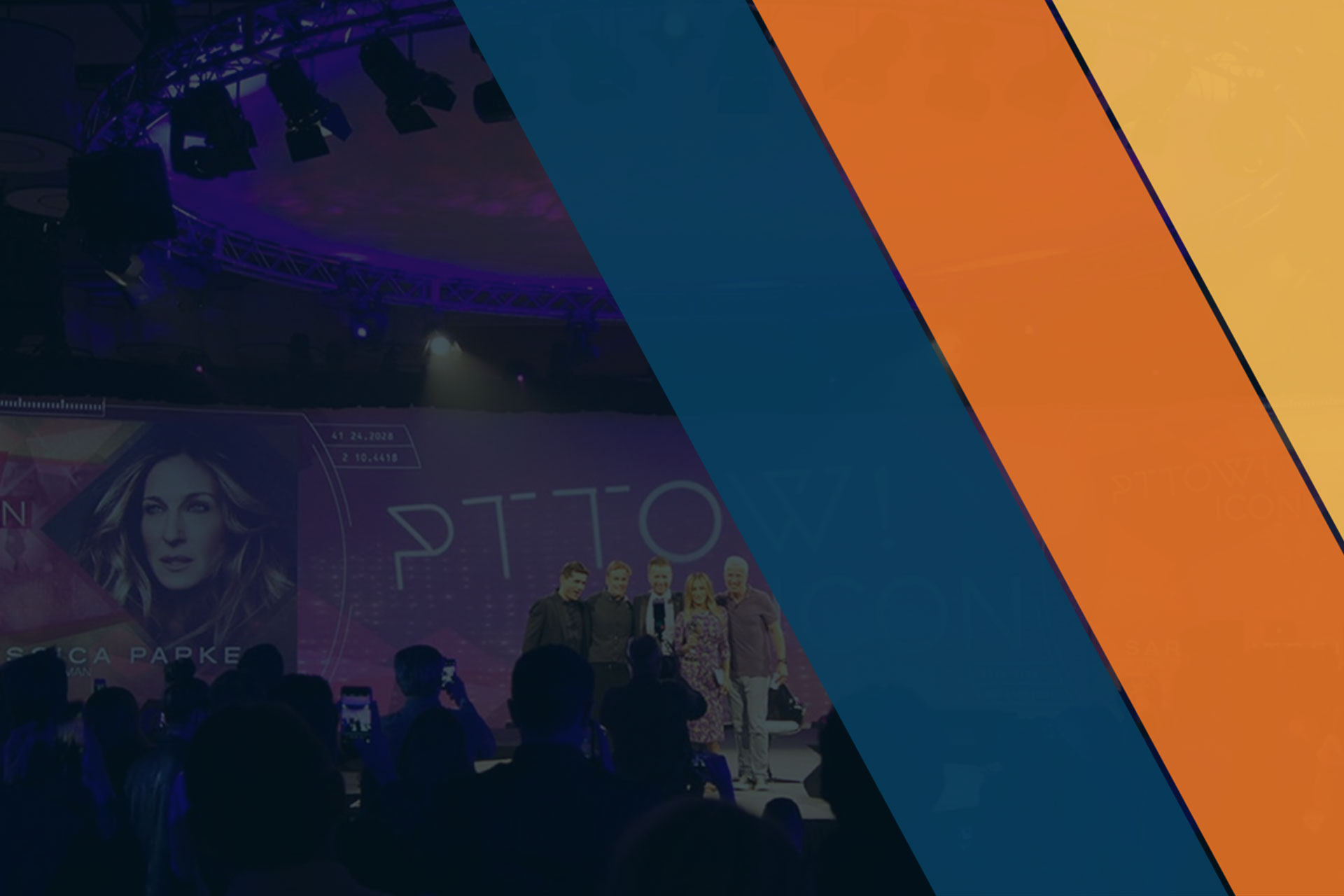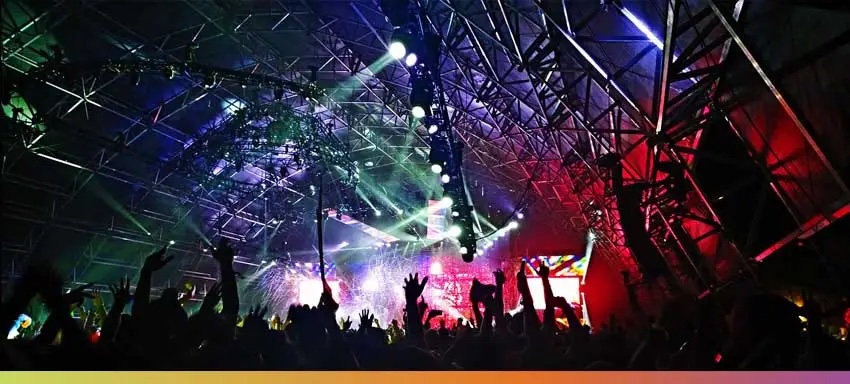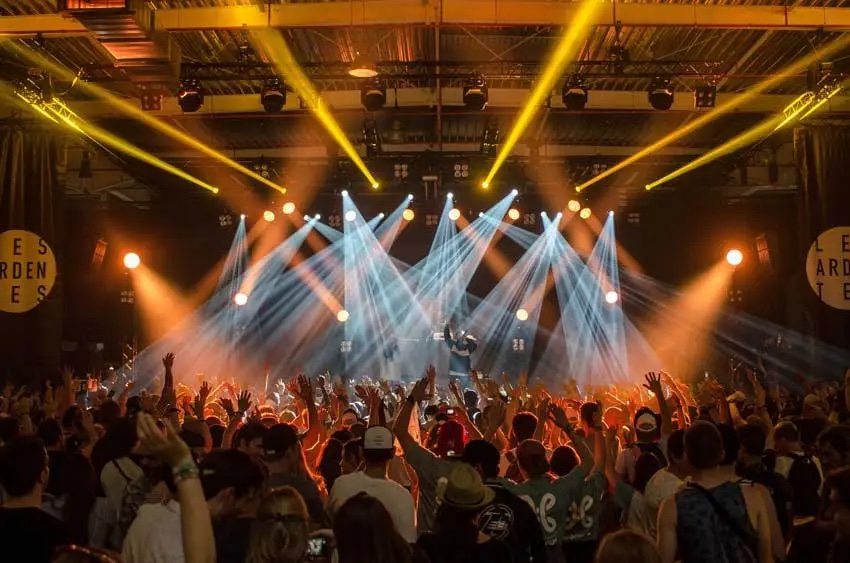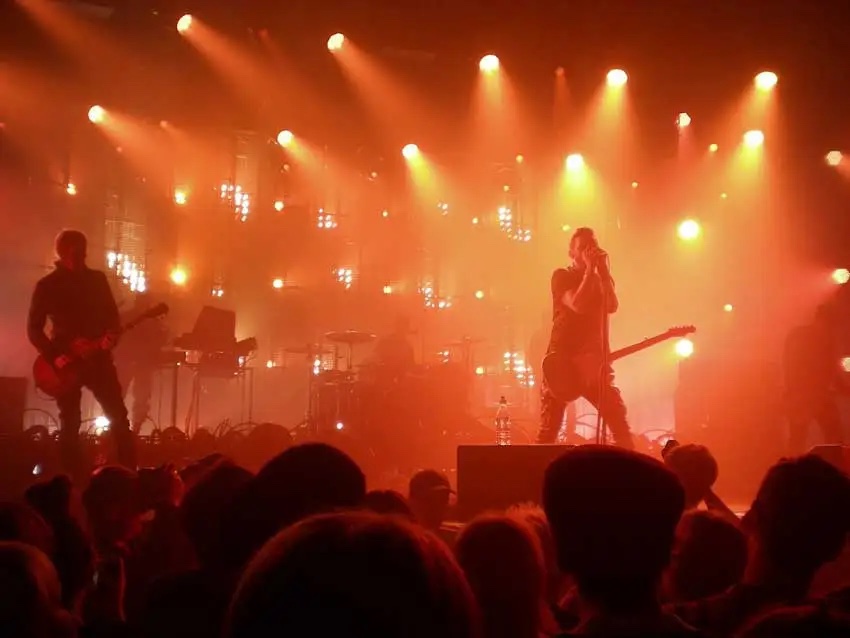

How to Create an Engaging Stage Design

In the world of live production, stage design requires a keen eye for detail, creative problem solving and best-in-class technology to create an exceptional experience. No matter what feeling you’re trying to evoke, there are several moving components to pay attention to when designing a stage for a live production.
From lighting to color to video and more, let’s take a look at the elements of an impactful stage design:
Creating Focus and Composition
When designing a stage, first define the central focus of your production. Whether you’re putting on a play with a full ensemble, an awards show or a solo musical act, you should have an understanding of what it is your audience needs to see and experience. This will help them emotionally invest in the performance.
via GIPHY
For example, when a solo artist is on stage, the backing band is usually set up to draw the audience’s attention to the key part of the act – the solo artist – rather than detract it. At an awards show, however, you may want to have multiple areas of focus as so many people are coming on and off stage.
Once you know the focus of your show, you can compose your stage from there. Strong visual composition is necessary for any successful production. This includes how large and small elements are placed and shown on stage. It also deals with lines, forms and size of all stage items. Composition can create any type of feeling from serenity to uneasiness to chaos. Additionally, composition can be changed just by how the lighting designer lights the scenery.
If you’re trying to achieve a sense of focus on stage, perhaps the best way to do so is through lighting.
Lighting
Light is an essential part of every stage production. Not only does it help everyone see what’s going on, it creates specific moods to support what’s taking place on stage.
When implementing a light system for your upcoming production, always use lighting elements with intention. Stay away from too much white stage wash and instead, use lights to and create a sense of depth and hone in on different focal points.
To focus the audience’s attention on a particular element, you’ll use what’s known as directional lighting. People most commonly know this as a spotlight – which darkens everything in the room except the main point of focus.
It’s pretty easy to simply flood a stage with white light, like you would see at a graduation ceremony or corporate presentation, however, that doesn’t help the audience connect with on-stage activities.
For example, at a play in a theatre, you’ll see lighting used to help the audience connect emotionally to the acting, dialogue or set. If there is a somber moment on stage, you may see deep reds, dark blacks or even a backlight that creates silhouettes in the background. A cheery or happy mood may require brighter colors, that promotes a feeling of exuberance. Beyond this, there are several other ways color can affect your stage design.
Color
Working color into your light show helps convey emotion, mood, setting, energy and many other important elements during a live production. With color, you can build a connection between the on-stage action and the audience.
Even adding a single filter to your stage lights can help convey some form of emotion – reds indicate warmth, intimacy, intensity; blues add a calming, serene feel to your stage; yellows convey excitement, energy and action. What’s more, you can explore various saturations, shades and tones of colors to see how they affect the production.

Of course, with more colors, you can create even more engaging light shows. Color combinations are what will make your stage design truly impressive. Most automated lighting fixtures let you mix a countless number of colors to achieve whatever look you want.
Setting your base color is what’s most important in setting the mood of the environment, but the other one or two colors you add is what adds flair to your stage production. Most of the time, you want to limit your color usage to two or three colors – any more than that and you run the risk of detracting from on-stage activities. While flashes of many different colors can be appropriate in some situations, when creating intentional, cohesive environments, don’t use more than three appropriately-matched colors to achieve a good stage design.
While, in general, more colors means more intrigue, to help guide your choices, here are three specific schemes you can try to tap into to keep your overall layout more cohesive:
A monochromatic color scheme is derived from a single base hue and includes all variations of shades, tones and tints of that one color. Lighting with a monochromatic color scheme really focuses in on a particular feel for an environment and can be quite an effective way to set the mood.
Complementary colors are simply two colors on the opposite sides of the color wheel. Using complementary colors, yellow and purple for example, creates a strong sense of contrast and is very effective at drawing-in audience member’s eye to a portion of the stage.
Analogous color schemes use colors that are next to each other on the color wheel. For example, yellow, orange and red are analogous colors. This type of color scheme usually matches well and is used to amp up intrigue, compared to a monochromatic scheme.

There are two main techniques for adding color to your light, known as the additive and subtractive methods. Thanks to advances in LED technology, additive color mixing has become quite popular. With color-mixing LED fixtures, you can achieve almost any shade of color you want by simply adjusting the proportional intensity of individual LED colors. Subtractive color mixing, however, is the kind of mixing you get if you illuminate colored filters with white light from behind.
Textures
Texture is another crucial aspect of an impactful stage design and can be produced in a few different ways.
To achieve texture through lighting, you’ll use something called a gobo. A gobo is a thin piece of metal, wood or glass used to modify the shape of a projected stage light. It’s normally used with ellipsoidal reflector lights, profile fixtures or automated luminaires which have a specific place to insert the gobo plate.
When the light turns on, the gobo blocks portions of the beam, casting a shadow in its shape, much like a stencil does for spray paint. With this, you can cast mesmerizing textures across your set that will add depth to your overall stage design.
Another way you can create depth through texture is by modifying the physical scenery on stage. By creating contrast between a textured background element and a smooth foreground (or vice-versa), you create a powerful way to draw the eye to various parts of the stage.
Video
With such a wide array of potential, video is sure to help you create an impactful stage design.
Video can make a fantastic centerpiece to your stage design. Video walls and massive projections are sure to draw-in every audience member’s eye. The biggest benefit to using a large central video screen on stage is that it removes the need for intricate physical sets. Instead of building a big structure, you can now build that structure using software on a computer and project it onto the stage backdrop.
via GIPHY
Additionally, video can be used to achieve other elements of stage design on this list, light, color and texture. Breaking up screens around the stage allows you to quickly and easily add these visual elements to your set. When you coordinate video, lighting, color and texture, you can greatly increase their power, compared to what they can achieve separately.

